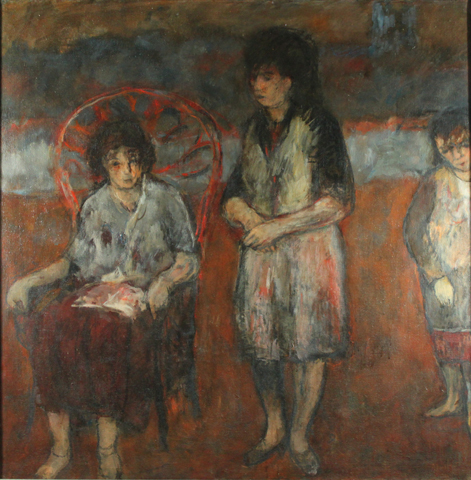
Joseph Friebert
A Life in Art
Past Exhibition
March 12–May 23, 2021
Saint John’s on the Lake
“Feelings over facts” was Joseph Friebert’s artistic mantra. Facts, he believed, could be learned, feelings couldn’t. As an artist he practiced what he preached; as a beloved teacher for thirty years at the University of Wisconsin – Milwaukee, he instilled it in the consciousness of countless students.
Joe Friebert was a remarkable artist whose work has always held a unique place in Wisconsin art. Instantly recognizable for its dark tonality, vigorous brushwork and subject matter, he consistently revealed a tremendous ability to self-analyze and project empathy for others, the latter a manifestation of his socialist upbringing and Depression-era experiences in Milwaukee.
As original as his work was, Friebert was unambiguous about his influences: Rembrandt for his drawing, deep glowing palette, and compassion; the Romantic landscapes of American painters such as George Inness; and the Ash Can School’s direct depictions of ordinary citizens inhabiting urban settings. Friebert believed in the maxim of art being “an individual expression arising out of societal experience.”
The essence of Friebert’s art is extraordinary technique matched with a deeply thoughtful examination of his subject matter. For example, his self-portraits are always unflinching and direct, and his post war portraits of refugees compassionate and as relevant then as they still are today. For over seventy years he sought to convey the human condition for good or for ill the only way he knew how: with feeling.
